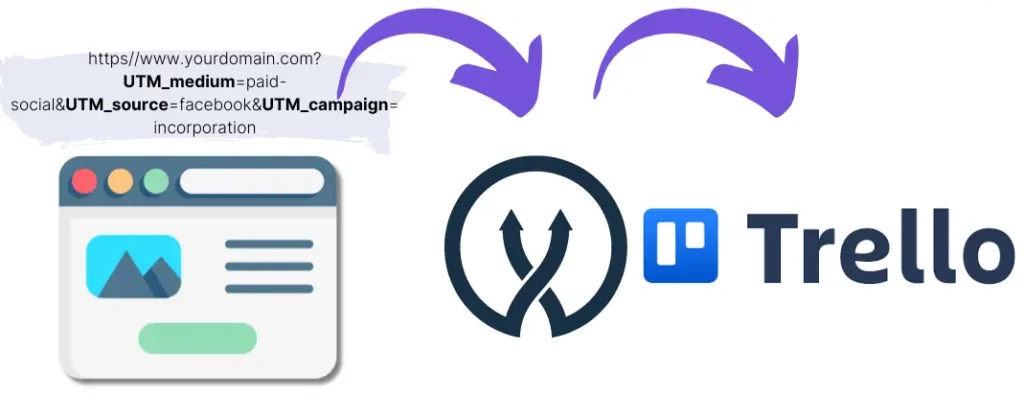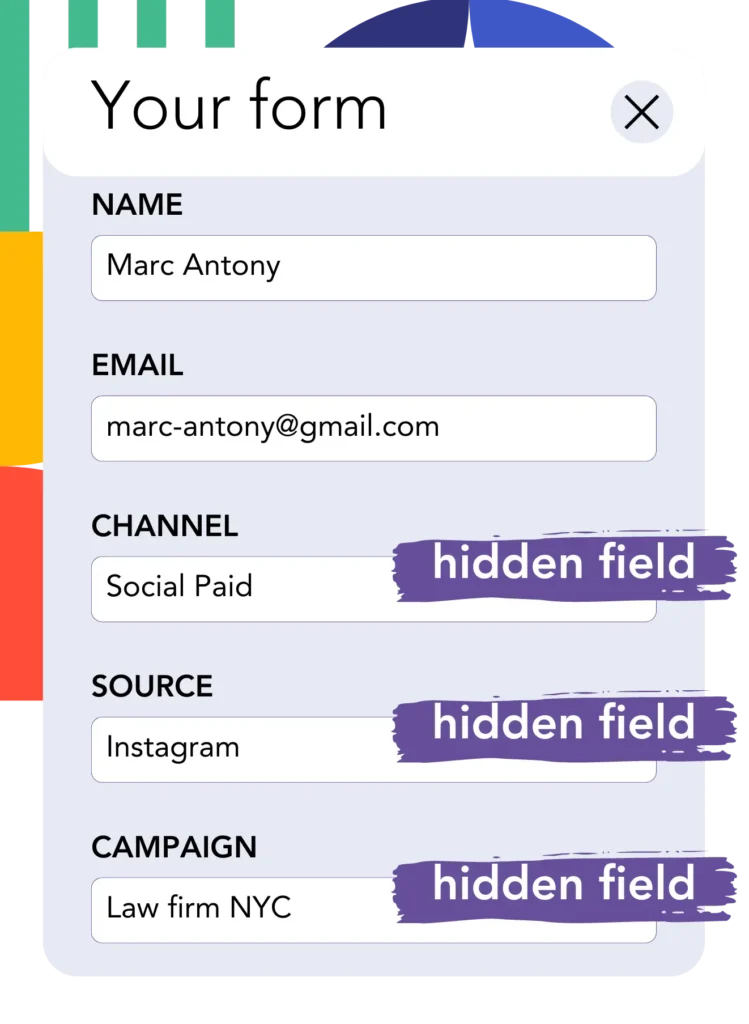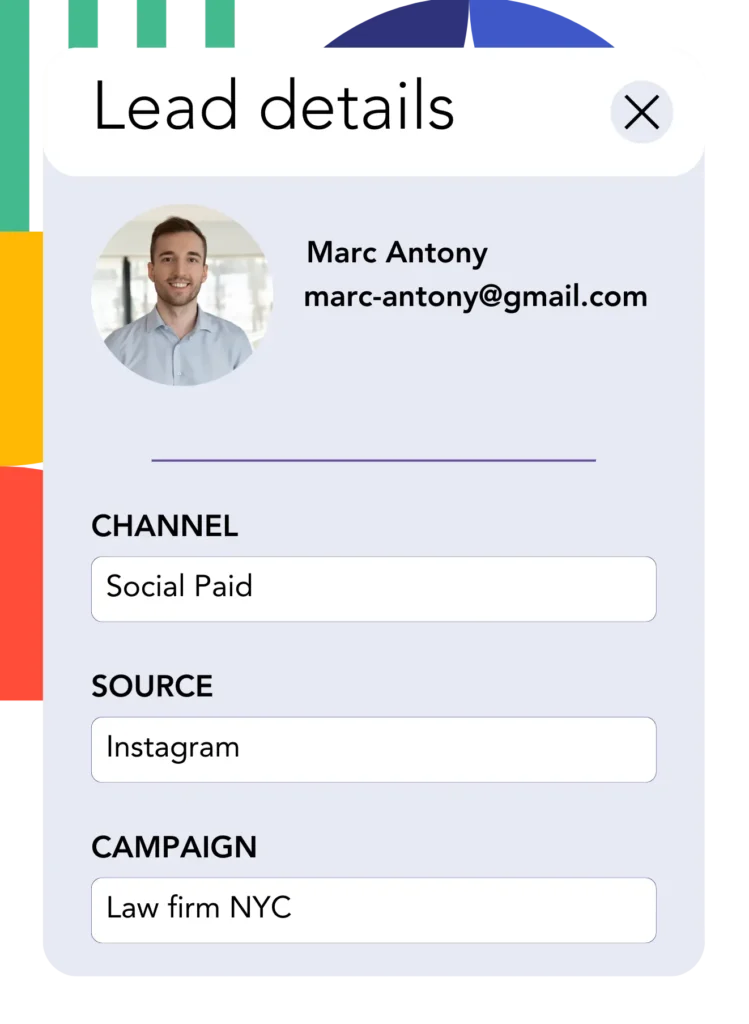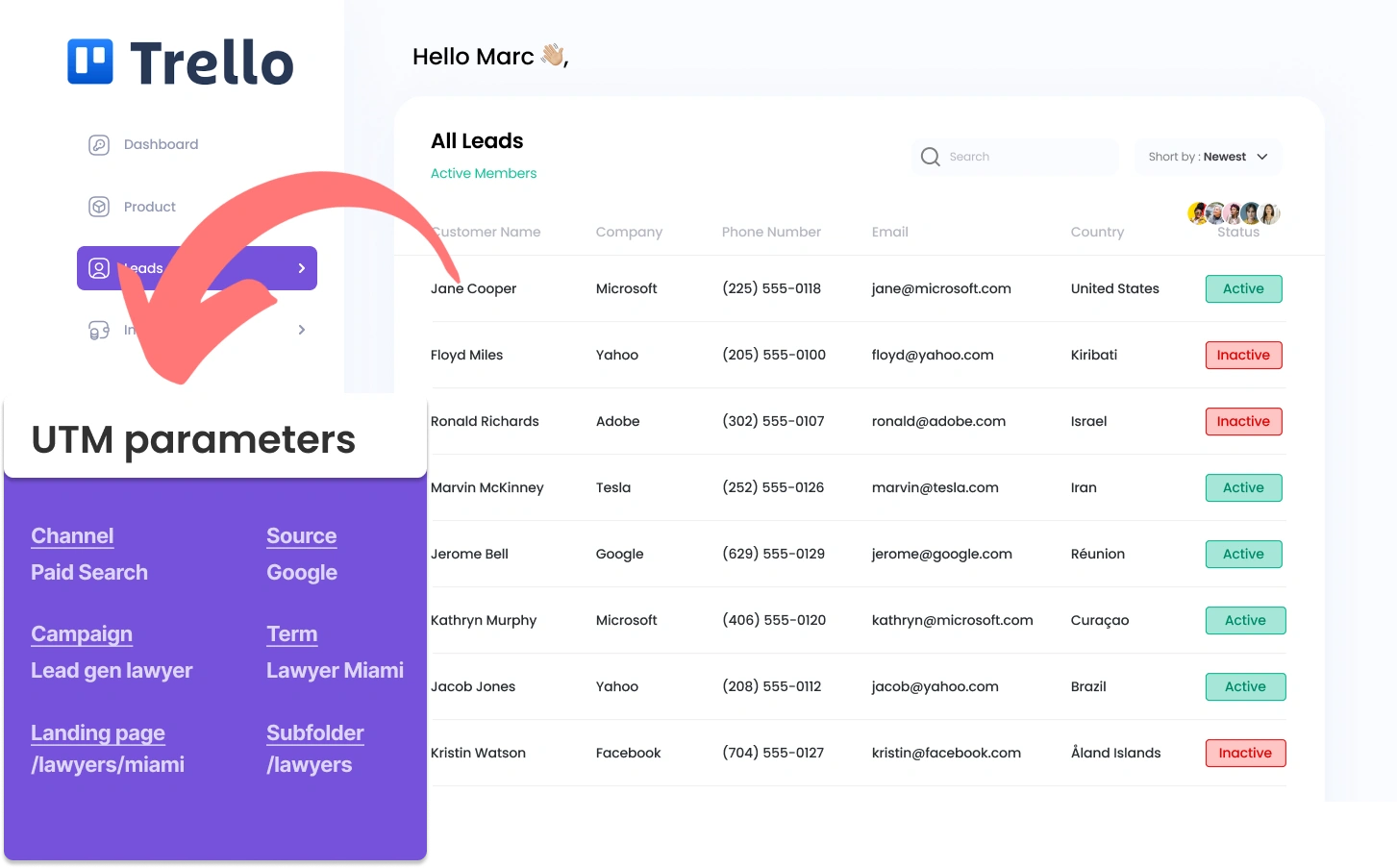Integrating UTM parameters into Trello can be complicated, especially for people without coding skills.
What if you could integrate UTM parameters into Trello without needing to write any code?
Meet Leadsources.io!
Leadsources is a lead source tracking tool that acts as a middleman between your UTM parameters and your CRM (in this case, Trello).

When a visitor clicks on your marketing campaign, Leadsources grabs the UTM parameters from the URL.
Leadsources then puts these UTM parameters into the hidden fields of your form automatically.
By connecting your form to Trello, you can see your new leads with their UTM parameters in Trello.
This helps you create reports to find out where your best customers are coming from.
This guide will show you how to capture UTM parameters into Trello in just 10 minutes using Leadsources, with no coding needed.
Capture UTM parameters into Trello in 4 easy steps
Step 1: Add Leadsources in the head tag of your website

Sign up to Leadsources.io, and benefit from our 14-day free trial.
Add the Leadsources code to the head section of your website. No coding experience necessary.
Simply follow the step-by-step guide we have created.
Step 2: Add the UTM parameters to your campaigns

Add the UTM parameters you intend to track across all your campaigns (PPC, email, social media, etc.).
The following UTM parameters are compatible with Leadsources:
- UTM_source
- UTM_campaign
- UTM_term
- UTM_content
In addition to UTM parameters, Leadsources captures information like the channel, landing page, and landing page subfolder.
Step 3: Add the hidden fields to your form

As users submit your form (name, email, etc.), Leadsources inserts the UTM parameters into the hidden fields (channel, source, etc.).
To do this, incorporate hidden fields in your form to track the UTM parameters. This step-by-step guide covers every form builder.
Step 4: Track the UTM parameters into Trello

When someone clicks through your campaign to your website, Leadsources records the UTM parameters from the URL.
Leadsources places the UTM parameters into the hidden fields of your form.
When the form is submitted, Leadsources sends both the UTM parameters and the form data to Trello. You must connect your form to Trello for this integration.
How does Leadsources work?
Adding the Leadsources code to your website’s head tag allows it to detect and capture UTM parameters in the URL every time a visitor lands on your page.
It then stores the UTM parameters in the hidden fields of your form.
Leadsources captures visitor data through the referrer, even if the visitor arrives at your site without UTM parameters:
- Channel
- Source
- Campaign
- Landing page
- Landing page subfolder
By using this approach, you can still capture important lead source data when UTM parameters are not available or preferred, such as:
- On Google Search
- On your Instagram bio link
- On your social media posts
Unlike most tools that rely on UTM parameters to track lead sources, Leadsources can capture lead sources from any origin:
- Organic Search
- Paid Search
- Organic Social
- Paid Social
- Referral
- Affiliate
- Display Advertising
- Direct Traffic
This facilitates the collection of clean lead source data all in one place.
How to run performance reports
After capturing UTM parameters in Trello, you can utilize them to run performance reports like:
- Leads per channel
- Revenue per channel
- Revenue per keyword
This allows you to make strategic decisions about how to allocate your marketing spend.
We’ll look into the types of reports available for you to run.
Lead performance reports
You can run reports showing the volume of leads generated by:
- Channel
- Source
- Campaign
- Landing page
- Landing page subfolder
Example #1
When running campaigns on multiple channels (SEO, PPC, email, etc.), you can export the data and generate a report named “Leads by Channel.”

Example #2
Once you determine which channel yields the highest number of leads (e.g., Google Ads), you can analyze this channel to find out how many leads each individual ad campaign generates.

Example #3
After determining which campaign brings in the most leads, you can conduct a deeper analysis by looking into the keywords responsible for generating those leads.

Sales performance report
While knowing which ads and keywords produce the most leads is beneficial, but does it show that they actually contribute to your revenue?
Sending form submissions to Trello enables the generation of comprehensive sales performance reports.
Example:
| Channels | Search Paid | Social Paid |
| Leads | 50 | 75 |
| Sales | 5 | 6 |
| Average order value | $150 | $100 |
| Revenue | $750 | $600 |
You ran ads on Google and Facebook and your campaigns revealed that Social Paid ads were more effective at generating leads than Search Paid ads.
Over a few weeks, reviewing lead conversions indicates that the Search Paid channel generated higher revenue with fewer leads compared to the Social Paid channel. This leads you to consider raising the Search Paid budget.
LeadSources tracks the source of each lead in Trello, whether they come from ads, organic search, social, email, etc. and syncs that data with each submission. See the full breakdown on the lead source in Trello page.

